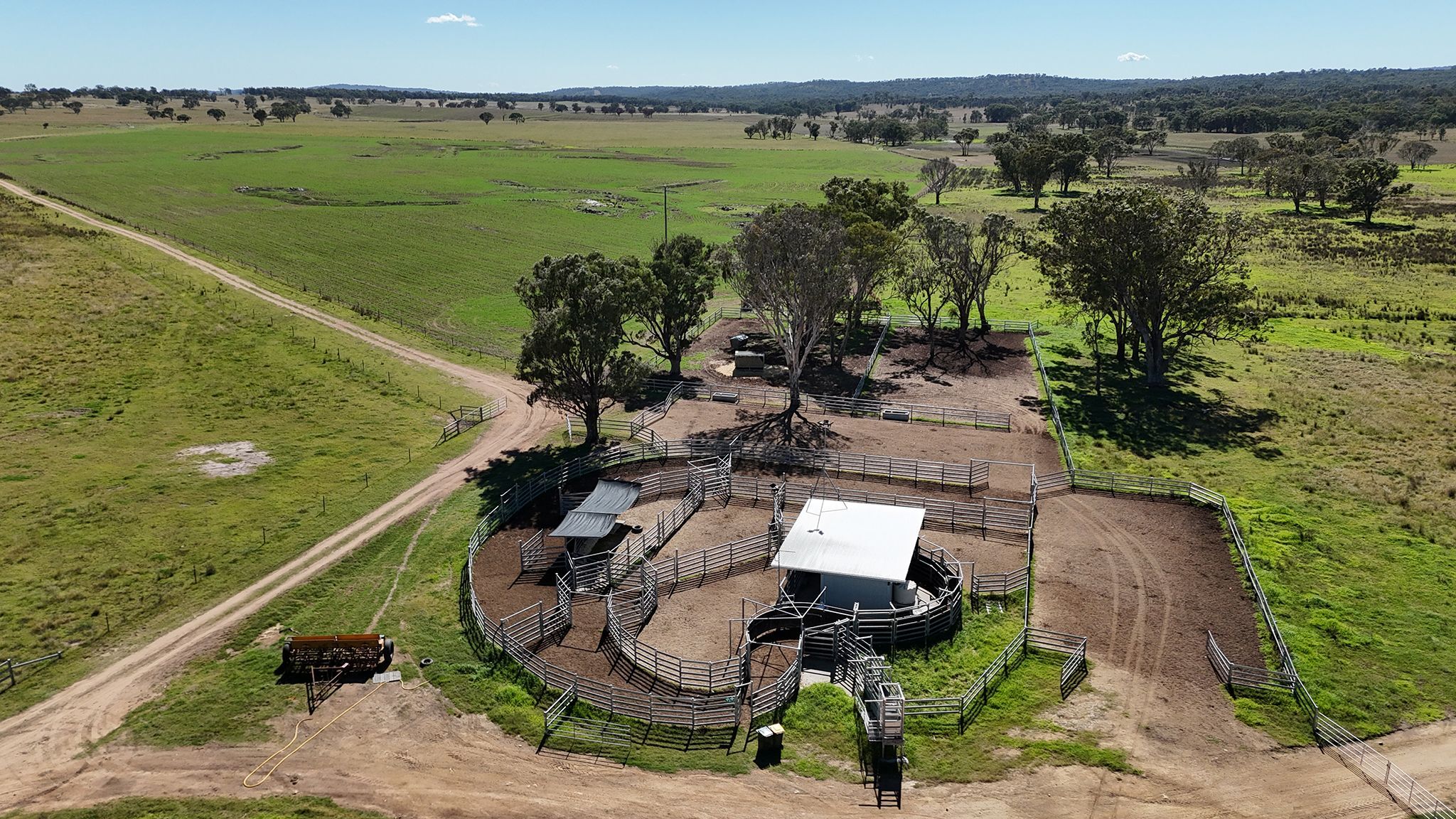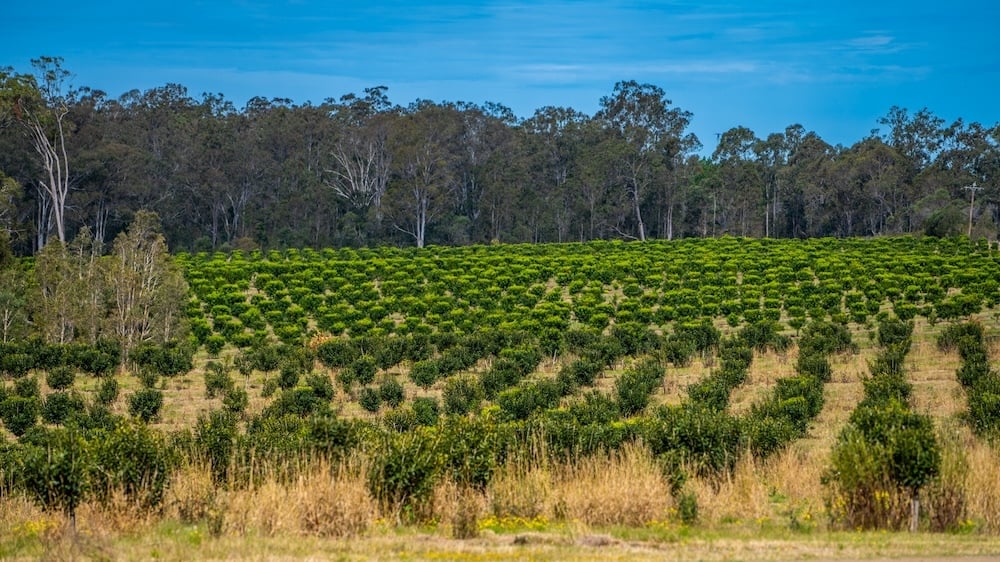$200m deal caps big week in Australian farm sales
Each week, we take the pulse of rural property - from sales data to who’s making headlines. Check out this week's report from Kylie Dulhunty.
6 min read
 Kylie Dulhunty
:
May 14, 2025
Kylie Dulhunty
:
May 14, 2025

In this week's property round-up with Kylie Dulhunty: Palgrove is divesting two of its prized Queensland properties as part of a sharp strategic pivot to double the size of its commercial breeding herd. Meanwhile, one of the Geelong region’s most iconic rural properties, Mount Moriac, has changed hands after 85 years in the one family, fetching an eight-figure sum in a tightly contested sale.
Size: ‘Palgrove’ - 2,566ha, ‘Killaloo’ - 1,651ha
Location: Southern and Western Downs, Queensland
Sale method: EOI closing June 19
Price guide: N/A
Palgrove is divesting two of its prized Queensland properties - ‘Palgrove’ near Dalveen and ‘Killaloo’ near Drillham - as part of a sharp strategic pivot to double the size of its commercial breeding herd to about 6,000 cows.
The move underlines the company’s ambition to cement its reputation as a national leader in elite beef genetics.
Combined, the two turnkey operations cover more than 4,200ha across the high-performing Southern and Western Downs, offering tightly held grazing country supported by extensive infrastructure and water security.
Palgrove Chief Executive Officer Will Heath said the divestment was a deliberate step in a broader growth plan.
“The Dalveen property has been a high-performance breeding and backgrounding hub, while Killaloo has historically supported paddock bull sales which will now be conducted from Palgrove’s new, purpose-built selling complex ‘Glen Wilga’ near Chinchilla,” he said.
Cattle yards at the 'Palgrove' holding. Pic: Supplied
At 2,566ha, the ‘Palgrove’ holding near Dalveen offers a 1,400 AE carrying capacity and has been heavily developed for improved tropical pasture, oats forage, and high-end infrastructure including a 12km central laneway system.
It’s well-watered with three bores, 59 troughs, Logan Creek frontage and 58 dams.
‘Palgrove’ also boasts high-quality accommodation for owners and staff, including the five-bedroom main homestead, cottage and a quarters/office building set within an attractive compound featuring irrigated lawns and trees.
Other working improvements include steel cattle yards with a covered working area, outpost portable yards, original yards with a stable and feed shed, a shearing shed, extensive machinery shedding, workshops and storage along with a hay shed, two grain silos and pasture seed storage.

'Killaloo'. Pic: Supplied
‘Killaloo’, spanning 1,651ha on 13 freehold titles, supports 785 AE and features brigalow belah scrub country is interspersed with narrow-leaved ironbark, with soils comprising a productive mix of predominantly deep brown and grey clay scrub soils and small areas of lighter yellow duplex loams.
Grazing includes dense buffel stands, bambatsi, purple pigeon grass, natural Queensland blue grass and green panic, complemented by seasonal herbages and legumes.
Those areas of arable land that have not been developed into high-performance pastures are currently planted to oats, lucerne and forage sorghum planted in the summer months.
Water security is a feature and is underscored by two equipped bores, natural water supplies from catchment dams and dual frontage to Drillham Creek, with an associated 40ML water entitlement, plus seasonal waterholes.
Other improvements include upgraded fencing, two cattle yards and two grain silos.
Both ‘Palgrove’ and ‘Killaloo’ are within reach of major centres, from Brisbane to Toowoomba.
LAWD Director Simon Cudmore said the sale offered a rare opportunity.
“This is a rare chance to secure two of Queensland’s better-known pastoral holdings that have been strategically improved to underscore the performance of one of Australia’s most highly regarded beef enterprises,” he said.
Expressions of interest close on June 19.

Size: 485ha
Location: Geelong region, Victoria
Sale price: About $18 million
One of the Geelong region’s most iconic rural properties, Mount Moriac, has changed hands after 85 years in the one family, fetching an eight-figure sum in a tightly contested sale.
The 485ha property, which was offered either as a whole or in four parcels, was listed late last year with price expectations of $16–$18 million.
The property it is believed to have sold at the upper end of the price range.
The buyer is understood to be a Melbourne-based entity, planning to use the property both for agriculture and long-term land banking.
Located just 27km west of Geelong, Mount Moriac is a landmark holding, rich with volcanic soils and panoramic views stretching from the You Yangs to the Surf Coast.
Originally settled by English immigrant Dr Michael Minter in 1850, the property was acquired in 1939 by Percy Champness, who developed it into a productive mixed-farming operation.
For vendor Helen Fitzpatrick, Percy’s granddaughter, the sale marks the end of an era.
“When my grandparents lived there it was great,” she told AuctionsPlus when the property was listed.
“We’d come down from New Guinea and stay in the holidays and I have memories of one of my uncles milking early in the morning and bringing a bucket of warm frothy milk into the kitchen for breakfast.
“Later my grandfather handed the farm on to his sons, and so we were, as kids, involved in things like hay cutting. I'd be popped on the little old Massey Ferguson, quite young to tootle around while my brothers threw hay bales on the back of the tractor-trailer.”
Mount Moriac was offered in four titles, but sold as a whole.
“The four titles are still quite big and there’s still a lot of lovely activities you could do,” Ms Fitzpatrick said.
“Agriculturally it’s quite rich, the soil is volcanic, and it’s very pretty with all of the Barrabool Hills.”
Rising global demand for grain and evolving seasonal conditions are creating mixed impacts on rural property markets across Australia, with experts pointing to both emerging opportunities and lingering caution among farm buyers and sellers.
In NSW, strong domestic and international demand for wheat, barley and canola is expected to drive a 10 per cent lift in grain production over the next five years, according to Herron Todd White’s latest Month in Review.

Rising global demand for grain and evolving seasonal conditions are creating mixed impacts on rural property markets across Australia. Pic: AgriShots
“The NSW grain industry is a vital part of the state’s economy and is expected to continue to grow in the coming years,” HTW Director Angus Ross said.
“The industry is well positioned to meet the growing demand for grain, and the NSW Government is committed to supporting its continued success.”
Prices for key grains remain firm, with wheat holding at $350 per tonne, barley slightly up to $312 per tonne, and sorghum steady at $360 per tonne.
Competitive factors, such as demand from feedlots and export markets, have kept NSW grain in strong demand.
However, property trends vary within the state.
In the Central West and Western regions, HTW Valuer Allister Rodgers said the market was patchy.
“The market has cooled lately, with more listings, longer days on market and a higher auction pass-in rate,” he said.
He added that while the top end was sluggish and lower-tier interest was limited, “there’s still underlying interest in the market,” helped by strong seasons in previous years.
Recent sales highlight the variation in values, from the $3,795/ha Darriwell Aggregation near Trundle to $7,999/ha at Gunners Dam near Wellington.
In Western Victoria, a dry growing season and cautious buyer sentiment have dampened activity.
HTW Director Graeme Whyte said property values had peaked in 2023 and remained flat since.
Some regions, such as the Wimmera, have seen price drops of up to 7.5 per cent, while the Mallee has remained stable.
“Property sales decreased in 2024 as farmers focused on preserving cash during the dry period from April to October,” he said.
“Some properties didn’t sell because vendors wanted 2022 sale prices, which buyers weren’t willing to pay.”
Meanwhile, Western Australia has posted a standout grain harvest of more than 22.4 million tonnes, its third-largest on record.
“The increased production over recent years can be attributed to not only modern farming techniques… but also a shift to warmer growing seasons and significant decreases in sheep numbers,” HTW Valuer Mitchell Boylan said.
With subsoil moisture reserves in place and a more optimistic outlook for 2025, WA’s grain regions are showing renewed confidence, though input costs remain a concern.

Size: 14, 574ha
Location: Central Queensland
Sale method: EOI closing June 19
Price guide: N/A
A large-scale breeding and backgrounding operation in Central Queensland’s sought-after Isaac region is up for grabs, with the 14,574ha ‘Myra’ cattle property being offered for sale via Expression of Interest.
Situated 84km west of Moranbah and 295km from Mackay, Myra is positioned in a premium area known for its reliable rainfall, productive soils and access to key livestock markets.
Carrying capacity is conservatively estimated at 4,500 adult equivalents (AE), with 11,897ha of developed gidgee and brigalow country, 1,110ha of alluvial flats, and 507ha of ironbark and rosewood.
The property is supported by significant water infrastructure including frontage to three creeks, nine catchment dams, waterholes, and extensive pipelines supplying 35 troughs.

“Myra offers the full package – extensive permanent water, established productive pastures and excellent infrastructure, making it a powerhouse property in a region renowned for its quality cattle,” LAWD Director Grant Veivers said.
More than 20 years of land class development has gone into the property, with 3,237ha blade ploughed and 91 per cent of unrestricted vegetation cleared or re-pulled.
Soils range from cracking clays to red and brown loams, supporting a mix of buffel and improved pastures like rhodes grass, butterfly pea and burgundy bean.
Infrastructure includes 24 paddocks, laneways stretching over 23km, and two sets of cattle yards—one with 2,000-head capacity and the other for 600.
Additional operational improvements include a solar-equipped workshop, machinery sheds, and hay storage.
The main homestead offers four bedrooms, two bathrooms, and extensive amenities across 436sq m.
Staff accommodation includes a manager’s house and two sets of quarters.
Myra is available via Expression of Interest, closing 12pm (AEST) on June 19.
Kylie Dulhunty is a journalist with more than 20 years experience covering everything from court to health. Today, Kylie loves nothing more than turning market trends, industry insights and epic property sales - residential, rural and commercial into captivating stories
Posts By Tag

Each week, we take the pulse of rural property - from sales data to who’s making headlines. Check out this week's report from Kylie Dulhunty.

Each week, we take the pulse of rural property - from sales data to who’s making headlines. Check out this week's report from Kylie Dulhunty.
.png)
Each week, we take the pulse of rural property - from sales data to who’s making headlines. Check out this week's report from Kylie Dulhunty.